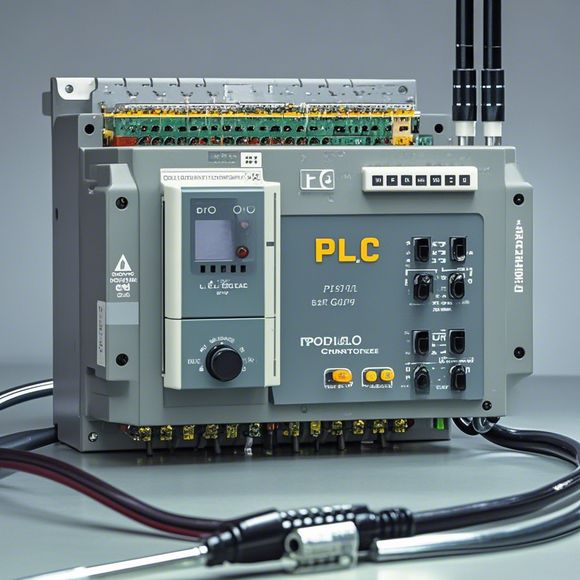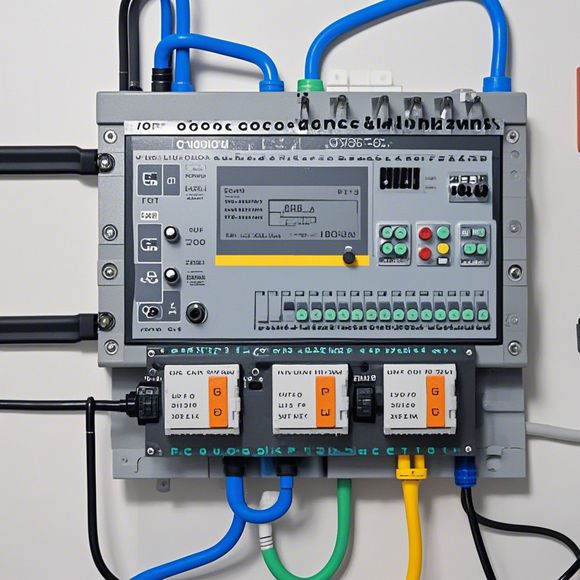PLC Controllers: The Backbone of Automation Revolution
PLC控制器,自动化革命的中流砥柱。
In the world of industrial automation, PLC controllers (Programmable Logic Controllers) are often referred to as the "heartbeat of modern manufacturing." They stand at the forefront of technological advancement, providing a robust solution for automating complex processes and enhancing operational efficiency.
At its core, a PLC is an intelligent device that can be programmed to carry out specific functions based on preset instructions. These instructions are written in a high-level language like ladder logic or structured text, enabling the controller to execute tasks such as starting, stopping, monitoring, and adjusting processes in real-time. Unlike traditional mechanical switches and relays, PLCs are programmable, allowing manufacturers to tailor their automation solutions to meet specific production requirements.
One of the key features of PLCs is their flexibility. With minimal programming, they can handle a wide range of applications, from simple control systems to complex industrial workflows. For example, a typical PLC might be used to manage a robot arm's movements within a factory setting, ensuring precision and safety while reducing downtime. In other cases, PLCs might be employed to automate a supply chain process where data is collected from various sources before being processed into finished products.
Another significant advantage of PLCs is their reliability. Thanks to advanced digital processing capabilities, these devices are designed to withstand harsh operating conditions and long periods of continuous use. This ensures that even during peak demand, production lines remain efficient and stable. Additionally, many PLCs come with built-in diagnostics and fault detection features, making them ideal for troubleshooting and maintenance.

When it comes to cost-effectiveness, PLCs offer a significant advantage over traditional control systems. By using software to program the controller instead of physical hardware, manufacturers can significantly reduce their hardware costs. Furthermore, since the programming language used is often more intuitive than that used in older analog systems, it can lead to faster development times and lower maintenance costs.
However, one potential drawback of PLCs is their complexity. While they may seem daunting at first glance, with the right training and resources, anyone can learn how to program and operate them effectively. Additionally, there is always room for improvement, and newer generations of PLCs are continuously being developed with enhanced features and capabilities.
Overall, when used correctly and with the right expertise, PLCs represent a game-changing force in the world of automation. Whether you're looking to streamline a small workshop operation or revolutionize a large manufacturing plant, a PLC controller can be your trusted ally. So why settle for anything less than the best when it comes to your next piece of automated machinery?
Content expansion reading:
Content:
Hey there! If you're new to the world of industrial automation, you might have come across the term "PLC controller" and wondered what it's all about. Don't worry, I'm here to break it down for you in a way that's easy to understand.
So, what is a PLC controller? PLC stands for Programmable Logic Controller. It's a type of industrial computer designed to control and automate various processes. Imagine a brain for machines and equipment. PLCs are super versatile and can be found in all sorts of industries, from manufacturing and automotive to food and beverage processing.
Here's a quick rundown of how a PLC works:
1、Inputs: These are the sensors that gather data from the environment or the process. They could be switches, thermometers, or any other type of device that provides information to the PLC.
2、Programming: Before a PLC can do its job, it needs to be programmed. This is where the logic comes in. Programmers use Ladder Logic, which is a graphical programming language that looks like electrical ladder diagrams, to tell the PLC what to do based on the input data.
3、Processing: The PLC takes the input data and runs it through the program to make decisions. If a temperature exceeds a certain limit, for example, the PLC might tell a valve to open or close.

4、Outputs: The PLC sends signals to actuators, which are devices that perform actions in response to the PLC's commands. This could be turning on a motor, adjusting a heater, or any other physical action.
PLCs are known for their reliability, robustness, and ability to operate 24/7 in harsh industrial environments. They're also modular, meaning you can add or change parts as needed. This makes them super flexible and adaptable to different tasks.
Now, let's talk about why PLCs are so popular:
Ease of Use: Even if you're not a computer whiz, PLCs are relatively simple to program and operate. The Ladder Logic makes it easy to understand and troubleshoot.
Scalability: Whether you need to control a simple machine or an entire factory, PLCs can be scaled up or down to meet your needs.
Reduced Downtime: With PLCs, you can set up preventive maintenance schedules to reduce unexpected breakdowns. This keeps your production running smoothly.
Cost-Effective: In the long run, PLCs can save you money by optimizing your processes and reducing waste.
Safety: PLCs can be programmed to ensure that machines only operate when it's safe to do so, which is a huge plus in any industrial setting.
So, there you have it! A PLC controller is a powerful tool that's essential for industrial automation. It's a bit like a traffic light for machines, ensuring that everything runs smoothly and safely. If you're interested in learning more about PLCs or how to program them, there are plenty of resources and courses available online. Happy learning!
Articles related to the knowledge points of this article:
Smart Manufacturing Solutions with PLC Integrated Machinery
The Role of Programmable Logic Controllers (PLCs) in Foreign Trade Operations
Connecting a PLC Controller to Your Computer
PLC Controllers: A Comprehensive Guide to Understanding Their Prices